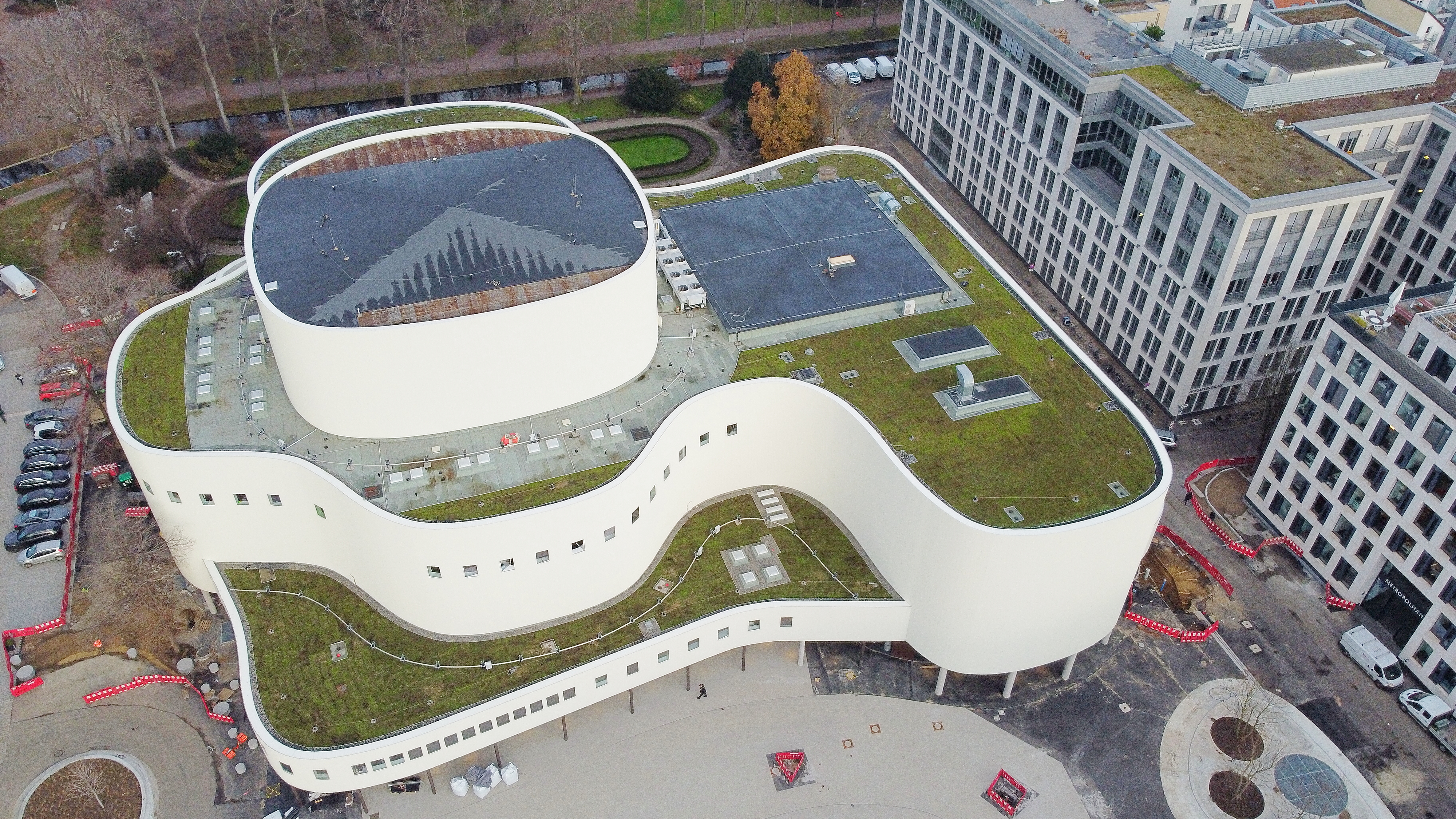In 1905, Louise Dumont and Gustav Lindemann opened the new building of the Düsseldorf Schauspielhaus on Karl-Theodor-Straße. Under the leadership of the arts-minded couple, standards and taste were shaped – as well as a theater academy, from which Gustaf Gründgens also emerged, later the director of the house. After the liberation, Wolfgang Langhoff was appointed as the director. He was followed by Gründgens, whose neoclassical style, work ethic, and the first-class ensemble promoted the Schauspielhaus to one of the most significant stages in Europe. After Gründgens moved to Hamburg in 1955, another golden age began.
Karl Heinz Stroux solidified the brilliant status with his work (including widely acclaimed Ionesco productions). Based on plans by the Düsseldorf architect Bernhard Pfau, the new building of the Schauspielhaus was opened in 1970 at Gustaf-Gründgens-Platz. After extensive renovation work, the façade has been shining again since the end of 2020 in the glory of organic architecture. In addition to the Great House, there is a Small House in the same complex; furthermore, the Young Schauspielhaus on Münsterstraße and, as an additional venue and rehearsal stage (in the former parcel post at the main train station), the "Central".







